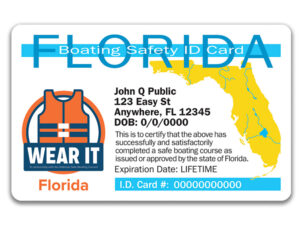A rope-to-chain splice is akin to an eye splice, except the line forming the eye passes through the top link of your anchor chain, and the eye is snugged tight. This allows a smooth transition from rope to chain to wind through the gypsy of a windlass as you’re dropping or retrieving the anchor. Here’s how to create a rope-to-chain splice using a three-strand rope.
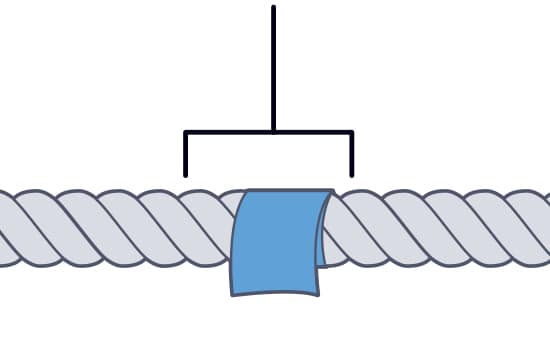
1. Whip It Good
To whip the line, wrap a half-inch-wide piece of masking or electrical tape tightly around the rope about 16 to 20 “picks” (the width of each spiraling strand) from the bitter end. With half-inch line, this equates to 10 to 12 inches.
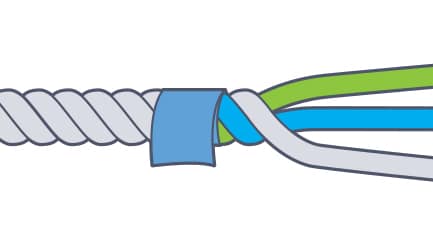
2. Unwind the Strands
Unfurl the three strands all the way back to the whip. Tightly tape the bitter end of each of the strands to prevent the finer filaments from unraveling. Create a cone shape with the end of the tape to make the weaving process go a bit smoother.
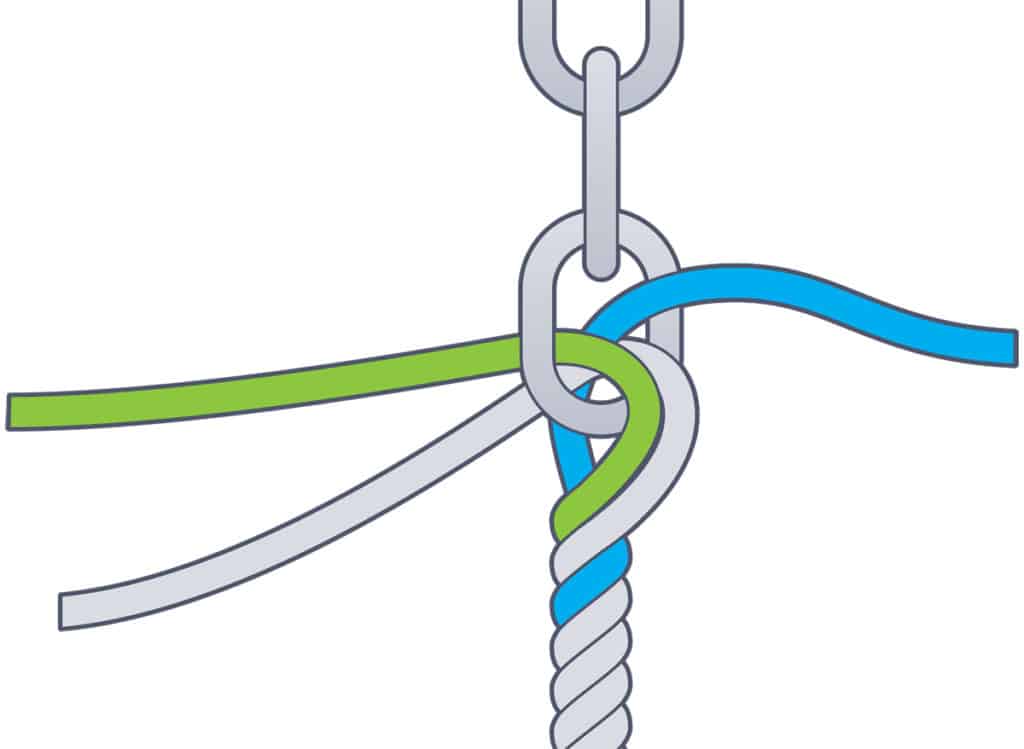
3. Thread the Strands
Pass two of the strands one way through the top link of the anchor chain, and then thread the third in the opposite direction between the two others. Some mariners place a section of heat-shrink tubing inside the link and thread the strands through it, using a heat gun to shrink it once the splice is complete. This serves as chafe protection.
Tip: Secure the upper 12 to 18 inches of the chain at a comfortable working height; otherwise, it gets too cumbersome to hold up the bulk of the heavy chain while creating the splice.
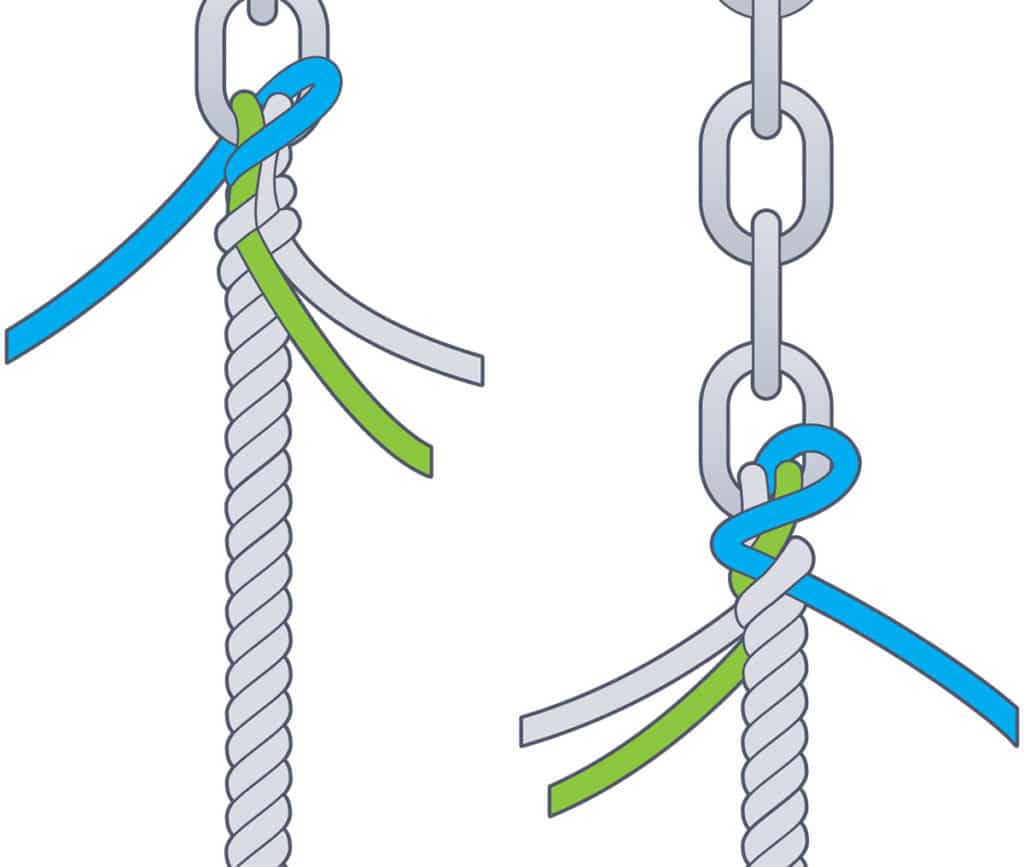
4. Tuck and Weave
Weave the strands by tucking them one by one through the strands forming the standing part of the line. After each series of tucks, the strands should emerge in a symmetrical fashion — like a tripod — from the standing line.
Tip: A marlinspike is a helpful tool in separating the strands of the standing line wide enough to create the weaves.
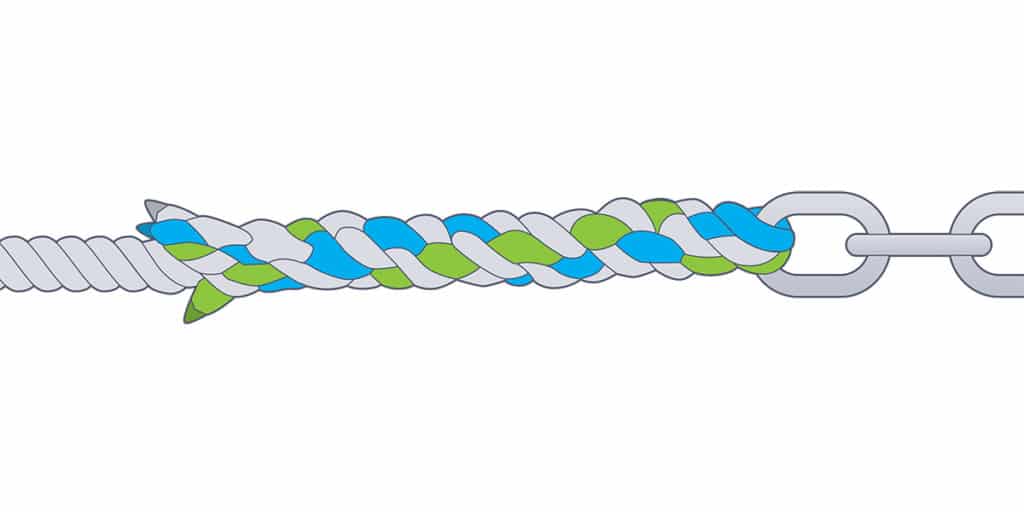
5. Cut and Melt
After completing five to six weave cycles, pull everything as tight as possible and then cut the three strands within a half-inch of the body of the splice. Use a butane lighter or torch to melt the end of each strand, allowing it to meld into the body of the splice.
Rope vs. Line
You might believe our use of the word “rope” to be landlubberly and that “line” is the proper nautical term. Yet Chapman’s Nautical Guides — Knots reminds us that “knots are created in rope. Once a piece of rope has been cut, knotted, and put to work, it generally becomes a line.” So, before you splice, it’s rope; when you’re done, it’s line.




